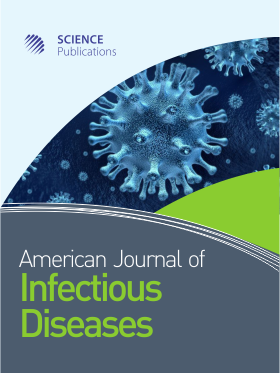Antimicrobial Pattern and Clonal Dissemination of Extended-Spectrum Beta-Lactamase Producing Klebsiella Spp Isolates
- 1 University Putra, Malaysia
- 2 Ilam university of Medical Sciences, Iran
- 3 University Putra Malaysia, Malaysia
Abstract
Problem statement: Gram-negative pathogens harboring ESBLs have caused numerous outbreaks of infections and are becoming an increasing therapeutic problem in many countries. The incidence of ESBL-producing strains among clinical isolates has been steadily increasing over the past years resulting in limitations of therapeutic option. The focus of this study was to examine the molecular epidemiology of ESBL-producing Klebsiella spp, investigate the susceptibility of Klebsiellae spp producing ESBLs towards non-beta-lactam antibiotics in the different seasons, identify the various clonal types of ESBL-producing K.pneumoniae and detect the dominant ESBL clonal types. Approach: Clinical isolates of Klebsiella spp were identified during the period March 2007- April 2008. ESBLs production identified by phenotypic and genotypic methods. MLST was performed for dissemination of ESBLs producing K. pneumoniae. Results: The findings showed that 51.6% of K.pneumoniae were produces ESBLs. 35.8, 21.2 and 38.7% of K. pneumoniae producing ESBLs were resistant to amikacin, ciprofloxacin and cotrimoxazol, respectively. It was found that 40 and 27.3% of K.oxytoca producing ESBLs were resistant to cotrimoxazol and amikacin, respectively. The findings reflected that ESBLs existed in 73% of K. oxytoca. The results showed that the frequency of blaSHV, blaTEM and blaCTX-M due to K.pneumoniae producing ESBLs were 87.5, 12.4 and 24.8%, respectively. Of the eleven K. oxytoca producing ESBLs, 100% blaSHV were obtained. Based on the nucleotide variations of the five genetic loci, twenty-five different STs could be identified among thirty K.pneumoniae producing ESBLs isolates. Among the STs shared by multiple isolates, the most frequently encountered were 14, 16 and ST18. Conclusion: In conclusion, the percentage of K.oxytoca producing ESBLs was higher than K.pneumoniae producing ESBLs. Generally, K.penomoniae produces more ESBLs in winter and fall than in the other seasons.
DOI: https://doi.org/10.3844/ajidsp.2010.110.121

- 4,021 Views
- 2,848 Downloads
- 1 Citations
Download
Keywords
- Antimicrobial pattern
- Klebsiella Spp
- Extended Spectrum Beta-Lactamases (ESBL)
- Klebsiella pneumoniae
- Urinary Tract Infection (UTI)
- Respiratory Tract Infection (RTI)
- Intensive Care Units (ICUs)
- Single Locus Variant (SLV)
